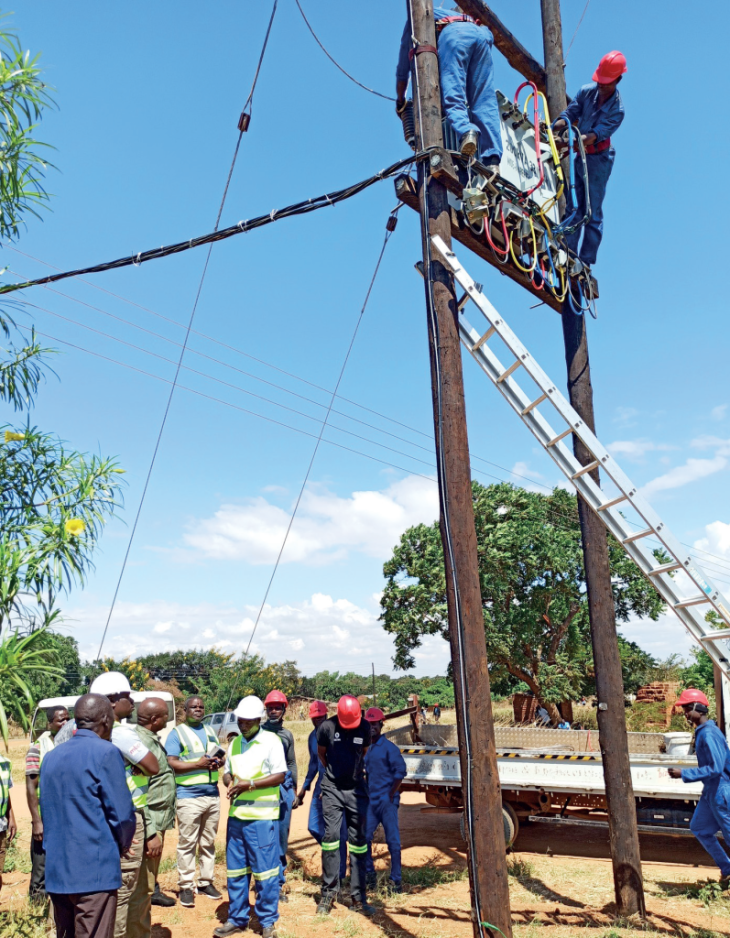
Powering Prosperity: Tapping into Malawi’s Electrification Potential to Fuel Business Growth
Key Business Points
- Electricity access growth: Malawi’s current annual growth rate of 3% may not be sufficient to achieve the target of 70% electricity access by 2030, with experts predicting a maximum of 30% access by then.
- Investment requirements: The country needs significant investment, estimated at $5.5 billion (K9.55 trillion), to increase electricity access from 25.9% to 70% by 2030, highlighting the need for serious investment and financing in the energy sector.
- Private sector involvement: Experts believe that involving the private sector is crucial to achieving the electricity access target, as government institutions alone may not be able to drive the necessary growth.
Malawi’s ambitious plan to increase electricity access from 25.9% to 70% by 2030 has been met with skepticism by experts, who believe that the target is overly optimistic. Despite ongoing electricity access projects, including the Ascent Malawi Project, which aims to connect 235,000 new households to the grid, experts say that the actual access may only reach around 30% by 2030. Renewable energy is expected to play a significant role in achieving the target, with the country already having installed a generation capacity of 550 megawatts (MW), comprising 398MW from hydro, 101MW from solar, and 52MW from thermal diesel.
The Ministry of Energy is optimistic about achieving the target, citing the various electricity access projects being implemented, including the Ngwee Ngwee Ngwee Fund, which aims to connect 811,000 households through solar home systems. However, experts warn that the country’s electricity access is growing at a slow rate of 3% per annum, making it challenging to achieve the target without significant investment and involvement from the private sector. As Brave Mhone, president of the Renewable Energy Institute Association of Malawi (Reiama), noted, "This work will not just happen overnight, it will take time and also effort from different stakeholders."
The Malawi Energy Compact, which was part of the Africa Energy Summit, estimates that the country requires $5.5 billion (K9.55 trillion) to achieve the target, highlighting the need for significant investment in the energy sector. The compact also outlines plans to add 1.15 million on-grid connections and 1.55 million off-grid connections by 2030. As Kandi Padambo, former CEO of the Electricity Supply Corporation of Malawi, noted, "Statistics show that the country’s electricity access is growing at three percent per annum, warning that by 2030, electricity access would be at 30 percent at maximum." This emphasizes the need for practical solutions and collaboration between government institutions, the private sector, and other stakeholders to achieve the target.
In Chichewa, the local language, this challenge can be described as "kugwira ntchito kwa nzeru" – working together to achieve a common goal. By involving the private sector and investing in renewable energy, Malawi can work towards achieving its ambition of increasing electricity access, which is essential for economic growth and development. As Grain Malunga, former minister of energy, noted, "Seventy percent is being over ambitious looking at the way government institutions work," highlighting the need for realistic targets and effective implementation. With the right approach, Malawi can make significant progress in increasing electricity access, driving economic growth, and improving the lives of its citizens.
What are your thoughts on this business development? Share your insights and remember to follow us on Facebook and Twitter for the latest Malawi business news and opportunities. Visit us daily for comprehensive coverage of Malawi’s business landscape.
- Empowering Malawi’s Economic Growth: MSME Act Set to Catalyze Business Expansion - October 27, 2025
- Stabilizing Maize Prices: A Catalyst for Malawi’s Economic Growth - October 25, 2025
- Fueling Malawi’s Trade Rise: How Digital Payments Are Supercharging SME Exports - October 25, 2025
